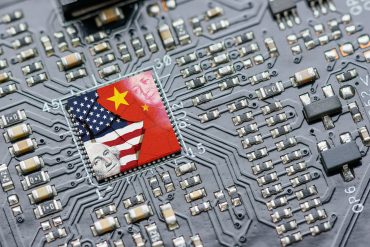
US and China Strike Trade Deal on Rare Earths, Semiconductors
6 minute read

Historic Trade Framework Eases Technology Export Controls as US and China Set August Implementation Date
Three Key Facts
- The US-China trade framework addresses two core issues: China’s rare earth export restrictions and US export controls on advanced semiconductors and aerospace components, with implementation deadline set for August 10
- The World Bank downgraded global growth forecast to 2.3% for 2025, citing trade tariffs and uncertainties as major factors affecting $1.5 trillion in annual global electronics production
- The agreement follows a 90-day tariff suspension from mid-May Geneva consensus and requires final approval from both Presidents Trump and Xi Jinping
Introduction
The United States and China have reached a critical trade framework agreement following high-level negotiations in London, marking a potential turning point in the world’s most consequential economic relationship. Commerce Secretary Howard Lutnick announced the breakthrough after discussions with Chinese officials, though the deal awaits final approval from Presidents Trump and Xi Jinping.
According to CNBC, the framework directly tackles the two most contentious trade barriers: China’s restrictions on rare earth exports and America’s retaliatory controls on advanced semiconductor and aerospace technology. This development carries significant weight for global supply chains, as rare earth elements power everything from electric vehicle motors to defense systems.
The negotiations build upon a previous Geneva agreement from mid-May that established a 90-day suspension of tariffs. Both nations had accused each other of violating that earlier consensus, creating tensions that a recent phone call between the presidents helped stabilize.
Key Developments
Commerce Secretary Lutnick, alongside Trade Representative Jamieson Greer, secured the framework after intensive discussions with Chinese Vice Premier He Lifeng and Commerce Minister Wang Wentao. The agreement requires both leaders’ endorsement before implementation can begin.
Chinese state media initially remained silent following Lutnick’s announcement but later acknowledged the framework through CCTV reporting. Li Chenggang, China’s international trade representative, confirmed progress in building bilateral trust between the nations.
The framework establishes August 10 as the critical implementation deadline. Unresolved details including specific export lists and enforcement mechanisms could derail the agreement and potentially reignite tariff disputes if not addressed within this timeframe.
Market Impact
The trade war has imposed crushing costs on the technology sector, with tariffs reaching triple-digit levels and companies absorbing tens of billions in lost sales and elevated expenses. U.S. automakers, chip manufacturers, and defense contractors have experienced production delays and price increases due to rare earth supply disruptions.
China’s CSI 300 index posted modest gains following the announcement, while U.S. stock futures dipped slightly as investors processed the news. The muted market reaction suggests traders had already anticipated a potential resolution to the trade standoff.
Temporary export licenses have been granted to rare earth suppliers serving America’s three largest automakers, signaling immediate relief for automotive and electronics supply chains. The agreement could reverse negative economic projections if successfully implemented and sustained.
Strategic Insights
The framework represents a shift toward “de-risking” rather than complete economic decoupling between the superpowers. Both sides acknowledge their interdependence in high-technology sectors while seeking mechanisms to manage competition without severing economic ties entirely.
Companies will likely continue diversifying supply chains and exploring alternative sources for critical materials, but the agreement may slow such efforts if stability returns. The technology sector anticipates renewed cross-border investment opportunities in artificial intelligence, green energy, and quantum computing as barriers ease.
The deal reflects mutual leverage rather than shared principles, creating inherent fragility in the arrangement. This dynamic suggests potential for future negotiation challenges as both nations balance cooperation with strategic competition.
Expert Opinions and Data
Senior economist Jianwei Xu of Natixis views the framework as evidence that disagreements require internal discussion before resolution. “The fact that the two sides will now brief their leaders is a clear sign that some disagreements or unresolved details still require internal discussion,” Xu stated, noting uncertainty about substantial breakthroughs.
Scott Kennedy from the Center for Strategic and International Studies offered a more cautious assessment of the agreement’s foundation. “This deal is taped together by the two sides’ leverage over each other, not common principles or shared interests,” Kennedy observed, highlighting potential instability.
Chris Weston, head of research at Pepperstone, emphasized the importance of implementation specifics. “The details matter, especially around the degree of rare earths bound for the U.S., and the subsequent freedom for U.S.-produced chips to head east, but for now as long as the headlines of talks between the two parties remain constructive, risk assets should remain supported.”
Industry analysts consider the agreement positive but expected, with market participants having already priced in a likely truce. The framework’s success could unlock value for rare earth mining companies and technology exporters, while failure would create significant market disruption.
Resolution and Implications
The framework agreement represents a tactical victory for industries dependent on critical materials, though its permanence remains uncertain. The August 10 deadline creates a binary outcome that will either restore supply chain stability or trigger renewed economic confrontation.
Both nations recognize the stakes involved, with rare earth minerals supporting $1.5 trillion in annual global electronics production. The agreement’s focus on mutual market access and reduced trade barriers signals pragmatic recognition of economic interdependence despite ongoing strategic rivalry.
Success depends entirely on presidential approval and detailed implementation mechanisms. The framework provides a foundation for de-escalation, but underlying competition in advanced technologies ensures that this agreement addresses symptoms rather than fundamental tensions between the world’s two largest economies.





